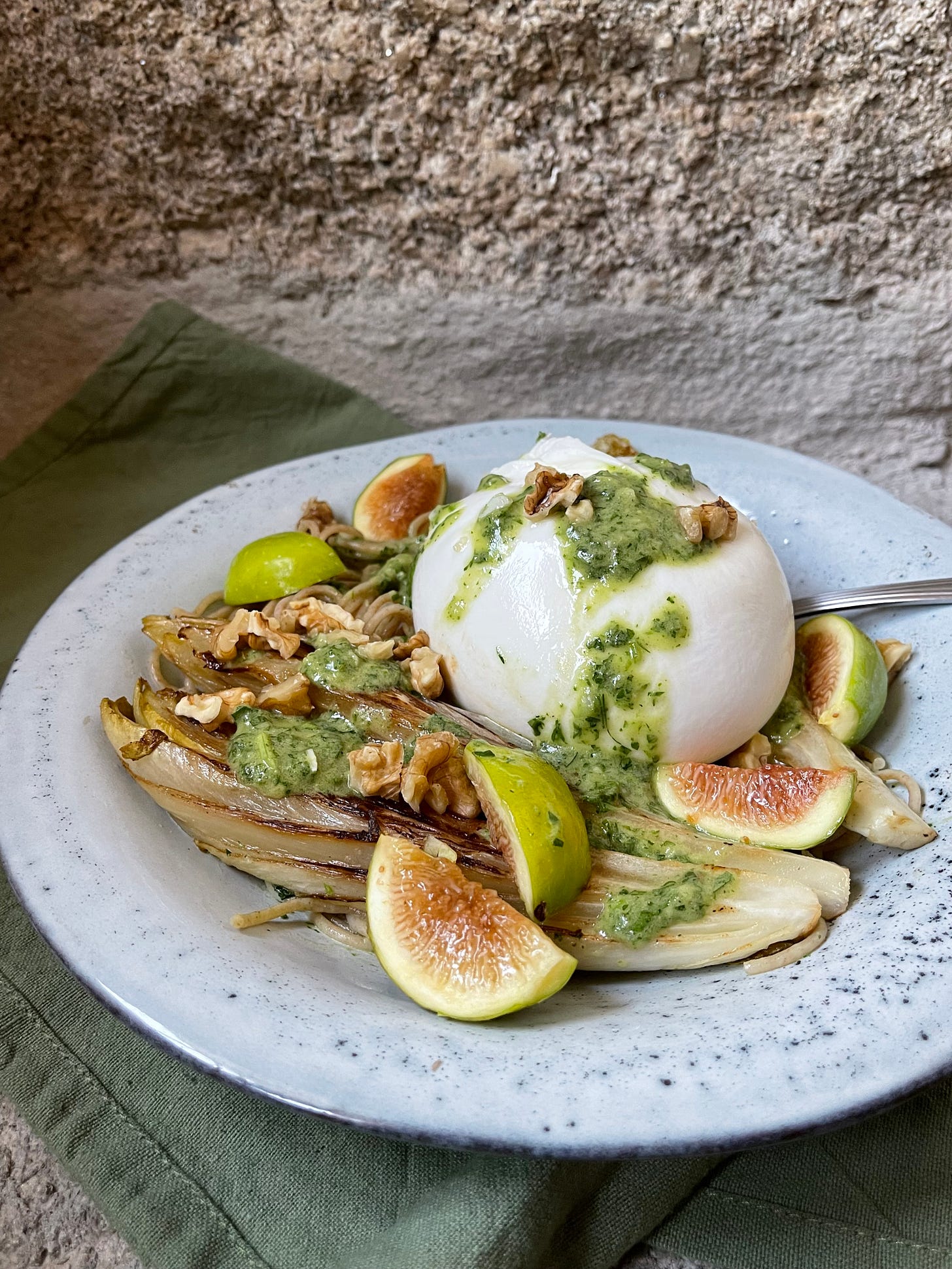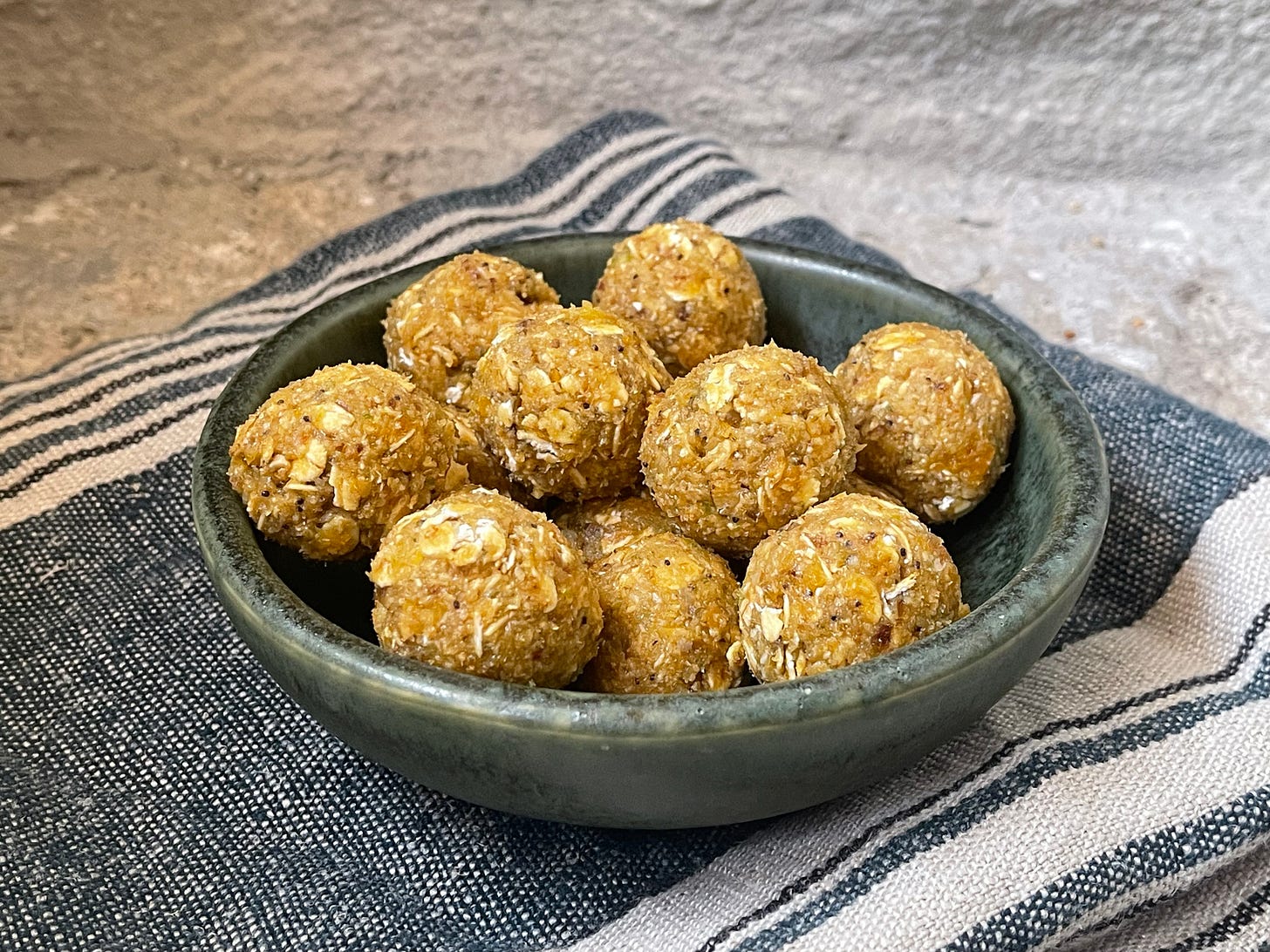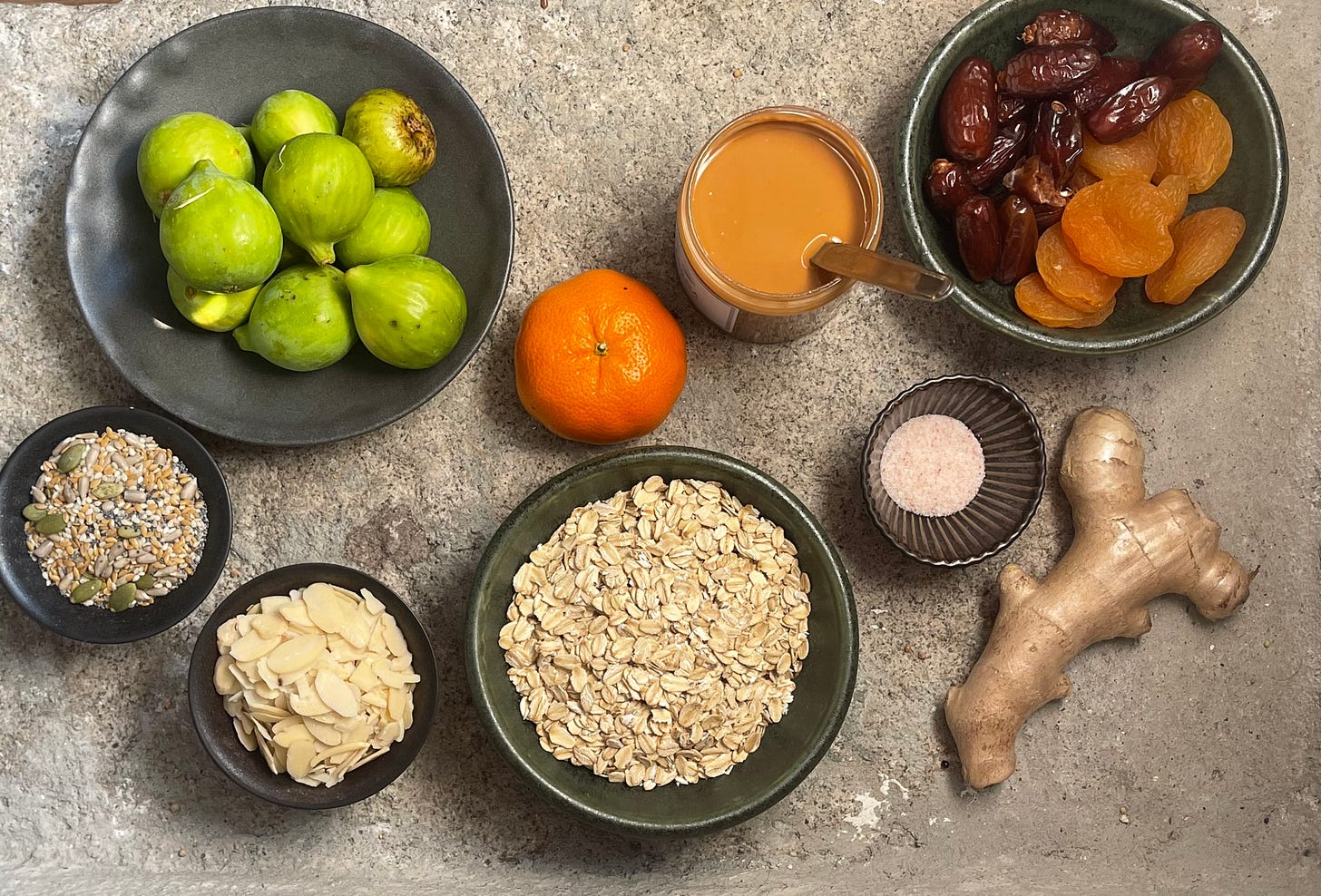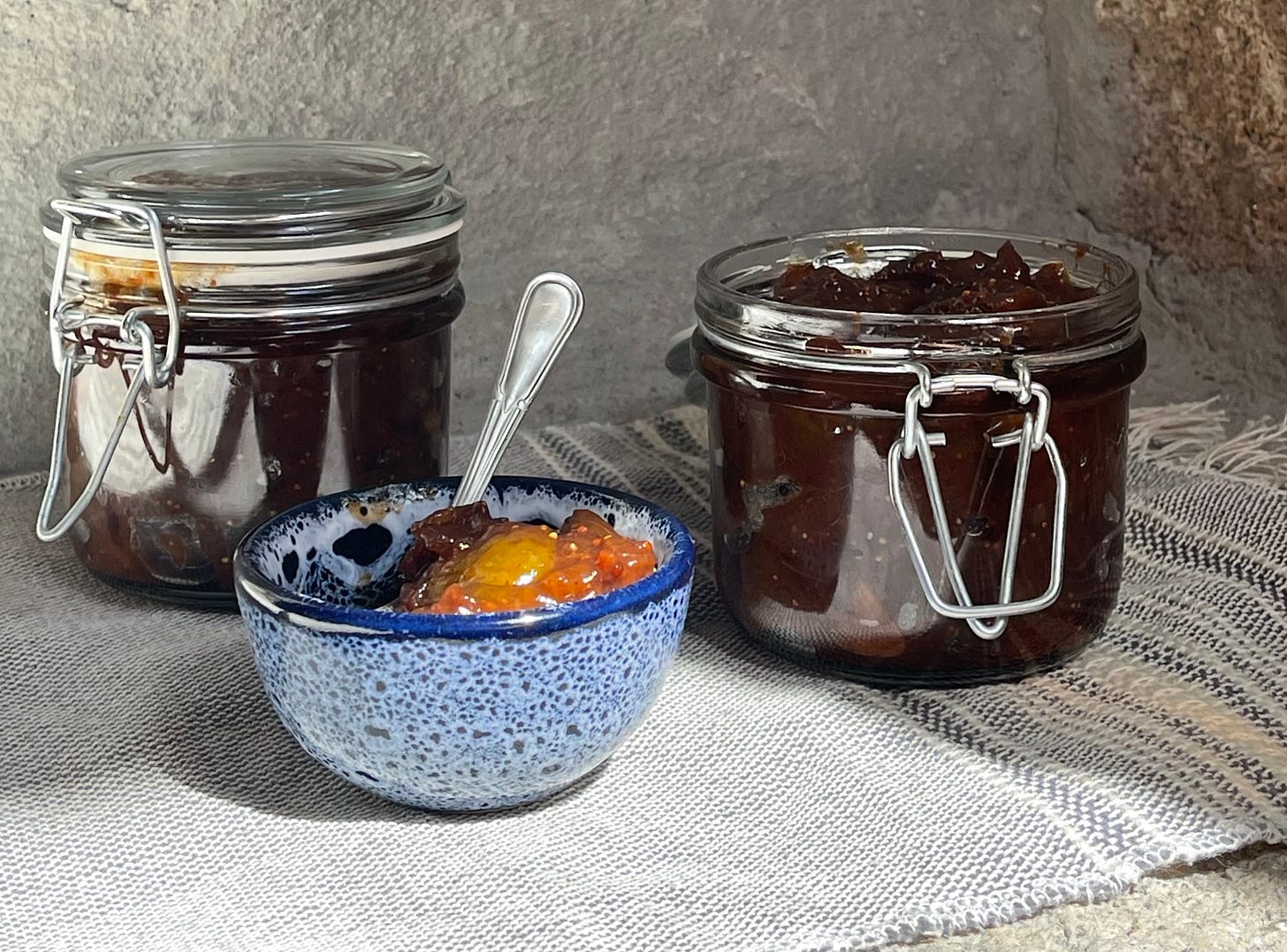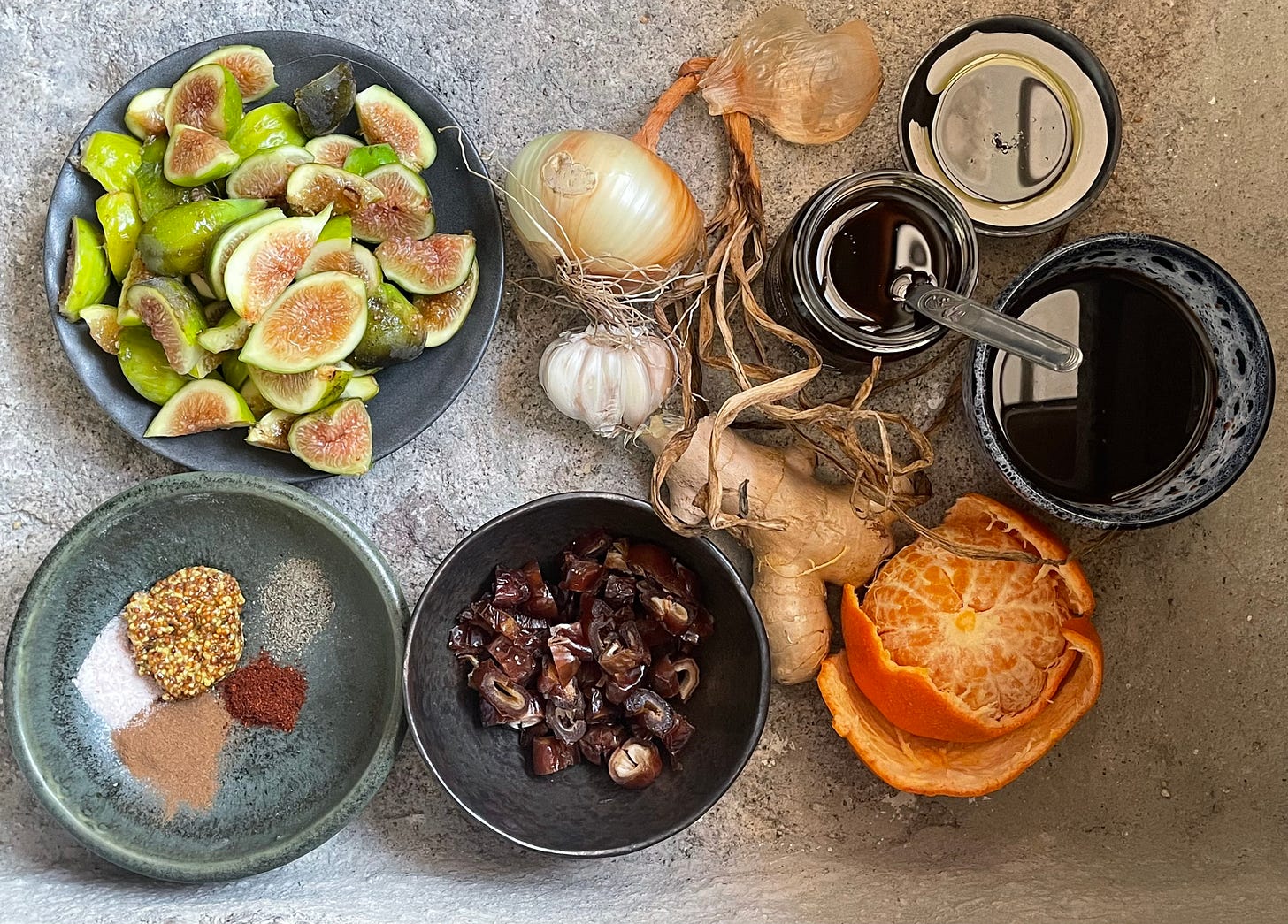Welcome to What’s Good Here, a weekly newsletter of recipes, guides, inspiration and expat news. Thank you for being here! This post is free, so please feel free to share it with the food and travel lovers in your life. What’s Good Here is a reader-supported endeavor. To support this publication and to gain access to all recipes, guides, giveaways and other perks, please consider becoming a subscriber. Thank you!
Last month, the lush, green mountains that surround my home in northern Portugal became the stage for an intense and terrifying transformation. I live along the thermal spa trail, where the air is usually thick with the scent of pine and wildflowers, and the thermal waters are rich with minerals, offering healing to people from around the world who come seeking it.
Just a few kilometers from the house where I’m living is Pedras Salgadas, a mountain town filled with character renowned for its restorative water, often referred to as the "San Pellegrino of Portugal." This area is a destination for those looking to benefit from the natural springs, and its welcoming spas, a tradition stretching back to the Roman era, are a testament to the recuperative history of this place. Fountains are scattered throughout the villages along the trail, offering cool, mineral-rich water that locals and visitors alike collect to bring home. It’s a landscape of deep, ancient beauty with its rolling hills, fertile valleys, abundant natural resources, vineyards, olive groves, and orchards cradling centuries of tradition.
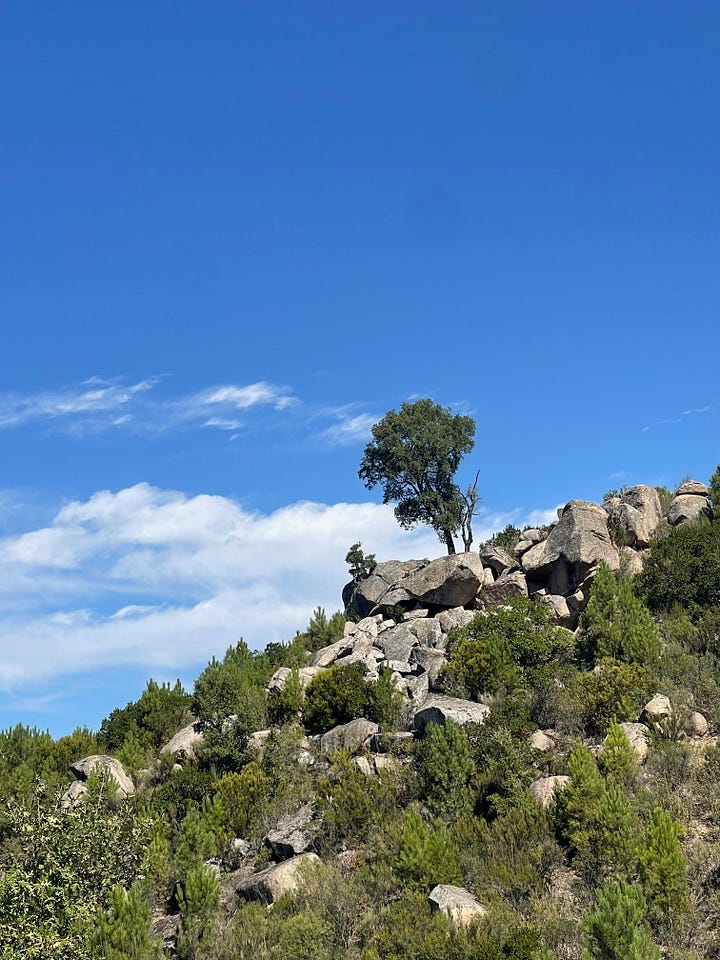
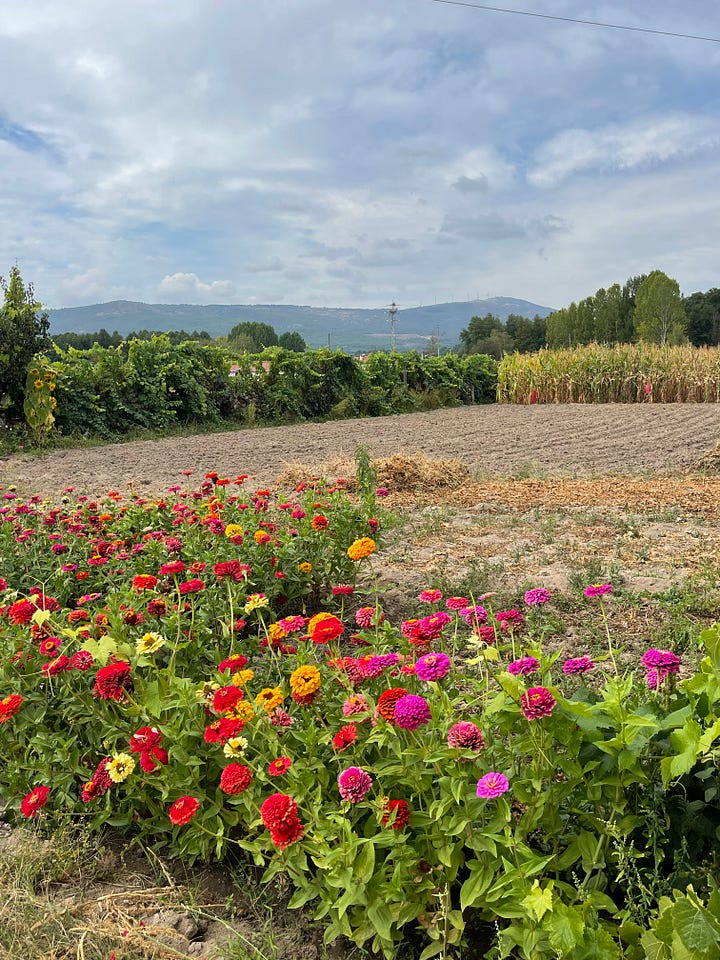
The weekend before the fires began, I spent a sun-drenched afternoon on the farm where I live, harvesting figs from one of the many decades-old trees on the property. The trees were heavy with fruit, their branches swaying slightly in the warm, early autumn breeze. My daily walk that afternoon took me up into the mountains, where olive, walnut, hazelnut and apple trees intermingle with grapevines and hedgerows tangled with blackberries and rosehips, all lush and alive with the sounds of birds, insects, and the hum of the earth itself. There’s an apricot tree I pass every day, its golden fruit ripening in the sun, and I always bring a foraging bag with me. On this afternoon, I collected a handful of apricots, their soft skin warm from the sun, and dropped them into my bag, already imagining the recipes I would make in the days to come.
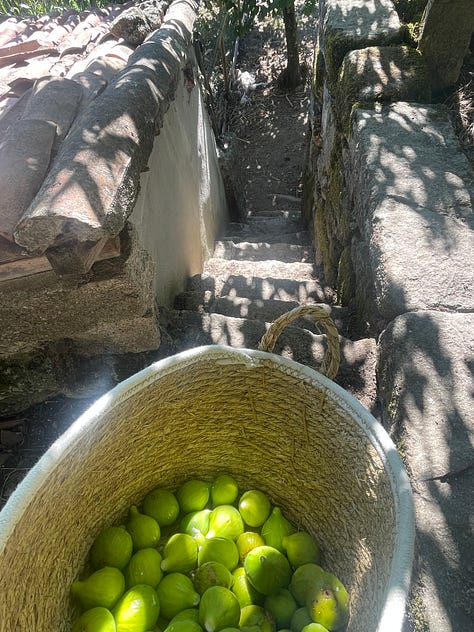
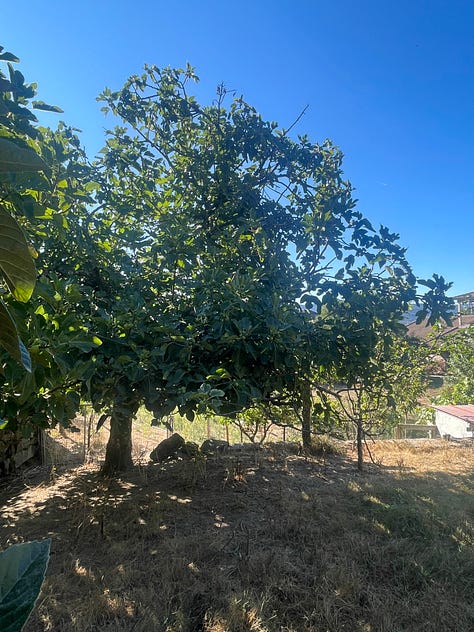
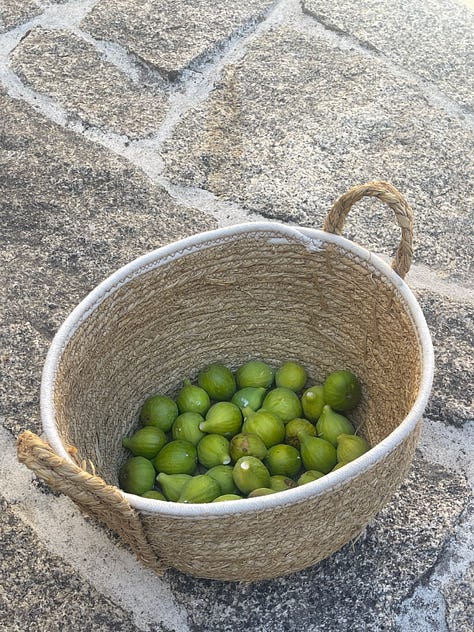
But by Monday morning, the world had changed. I woke early and, from my bedroom window, saw smoke rising from the mountaintop across the valley. At first, it was a thin wisp, almost inconsequential. We had received warnings that the forests were dry, urging everyone to be cautious, but I assumed it would be a small, quickly contained fire. I was supposed to travel abroad that afternoon but as the hours passed, the smoke thickened and the fire spread, engulfing the entire mountaintop in flames. By the evening, travel plans canceled because of a road closure and growing anxiety, the fire had leaped from one ridge to another, and the valley was filled with plumes of dense blue smoke.
That night, the flames blazed red and fierce across the field just in front of the house. It traveled so quickly across the landscape, like a burglar escaping after pillaging something that didn’t belong to them. The air was thick and acrid, smelling of smoke, and my eyes stung from it. I live in an old stone house, its walls thick and strong, but even here I felt vulnerable. The fires were too close, and the sky, usually a deep indigo blue filled with silver stars, glowed an ominous red. The red of Mordor. The harvest moon hung low on the horizon, its milky orange light tainted by the smoke and fire, turning it into a massive red orb that felt both luminous and foreboding. I couldn’t help but think of it as some kind of ancient omen, a sign of the destruction that was taking place all around us.
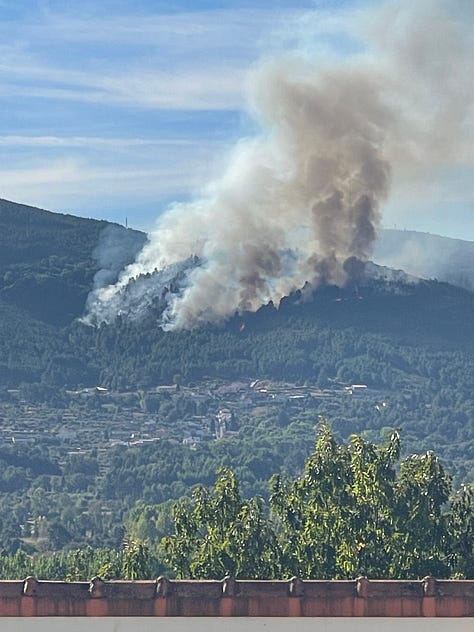
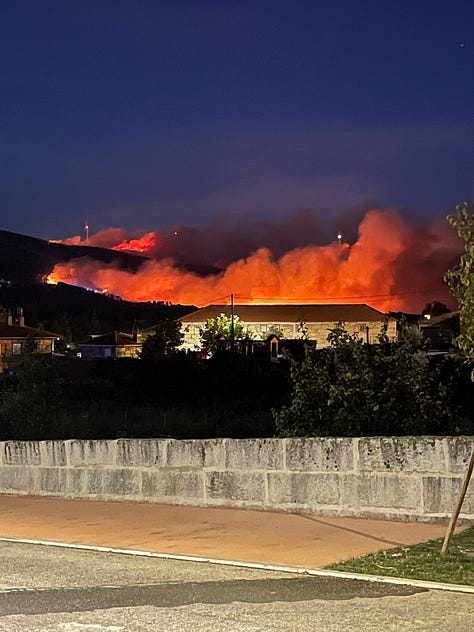
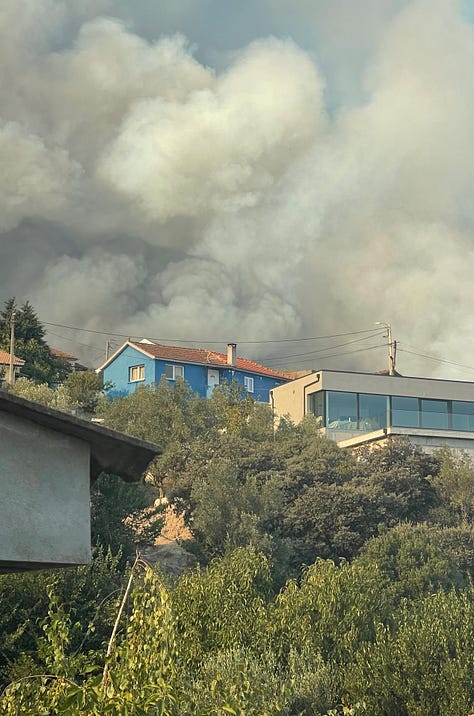
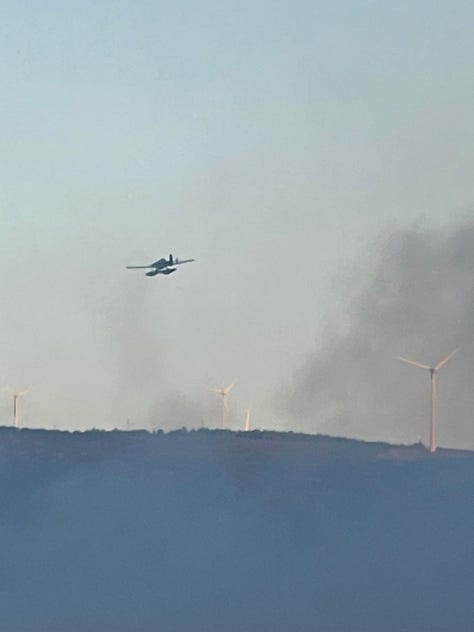

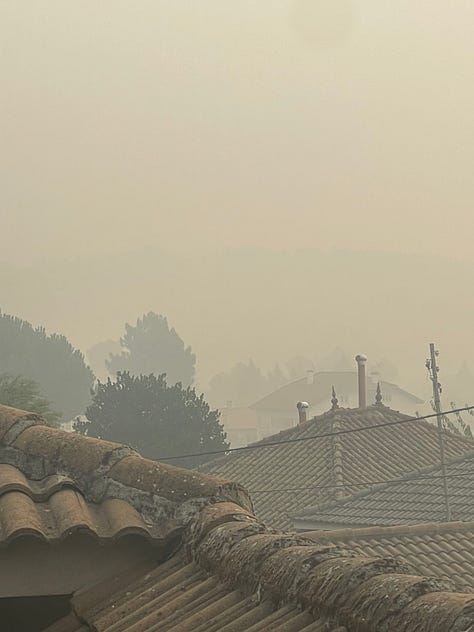
The fire blazed through the night, and I barely slept. I woke often, looking out the window, fearing that at any moment the flames might leap across the valley and threaten the house. Despite the solid stone walls, the heat and danger felt all too real. When sunrise came, I looked out and saw that the field directly in front of the house was blackened and charred, the trees stripped bare. I felt a wave of relief—at least this part of the fire had been extinguished. But then, when I looked to the other side of the house, there were new flames, rising from a different mountaintop, even closer than before. Huge, billowing bursts of fire shot into the sky like the eruptions of a volcano. It was terrifying, and I felt the anxiety tighten in my chest, my thoughts racing.
I packed a to-go bag just in case we needed to evacuate but when I asked a neighbor to tell me if that order came, he told me that no matter what, we would not be leaving. I later learned this was for two reasons: In 2017, the last time Portugal endured such devastating wildfires, dozens of people died when they tried to evacuate but became trapped on impassible roads. And because both of the roads leading out of the village were now closed.
I knew I couldn’t spend the day staring at the disaster unfolding, so I did what I often do in times of stress—I cooked. The figs I had gathered over the weekend were waiting in a bowl in the kitchen, and as I began to prepare them, the familiar rhythms of chopping and stirring helped settle my mind. The house filled with the scent of garlic and onions caramelizing in olive oil, cutting through the smoky air.
I decided to make a simple pasta dish, one that would ground me in the integrity of the ingredients from the farm around me. I started with endives, charring them just enough to mellow out their bitterness, then tossed them with walnuts for a bit of crunch. But the real star was a glossy ball of burrata, a delicate cheese with its trademark creamy interior. I prepared a vibrant green salsa verde that I added the burrata whey to for a little tanginess. I drizzled the sauce over the dish and garnished it with sliced figs before cutting into the burrata, its soft, velvety interior spilled out, coating everything with a luxurious silkiness. The sweetness of the figs balanced the sharpness of the endives, and the burrata melted gently into the nooks of the warm, comforting noodles.
As the fire raged outside, this dish became a small act of defiance—a rebuke to the devastation happening just beyond the walls of this house. The act of cooking gave me focus, a way to channel my fear into something optimistic and reassuring. I sat down to eat as the red glow of the flames flickered in the distance, and for the first time since the fire began, I felt at peace.
Throughout the night, the fourth since the fires began, I woke often, afraid that the fire would creep closer. In the morning, I could hear the now familiar sound of helicopters as they flew back and forth above the village for water drops. The birds, usually a lively, comforting presence at sunrise, were flying in strange, haphazard patterns, disoriented by the smoke and heat. The fires had turned their world upside down, too. I opened the window once to check the air, and a single bee flew into the room, only to land on the floor and die almost instantly. It was a small, heartbreaking moment in a week filled with uncertainty.
By the next morning, Friday, something had shifted. Thick clouds had gathered in the sky, low and winter white, and by mid-morning, the first cold drops of rain began to fall. It was a welcome relief, the rain soaking into the scorched earth, cooling the air, and bringing a sense of reassurance. The fires, still burning in other parts of the country, seemed to retreat from this little valley. I stepped outside, feeling the cold rain on my face, and for the first time in days, I felt hopeful.
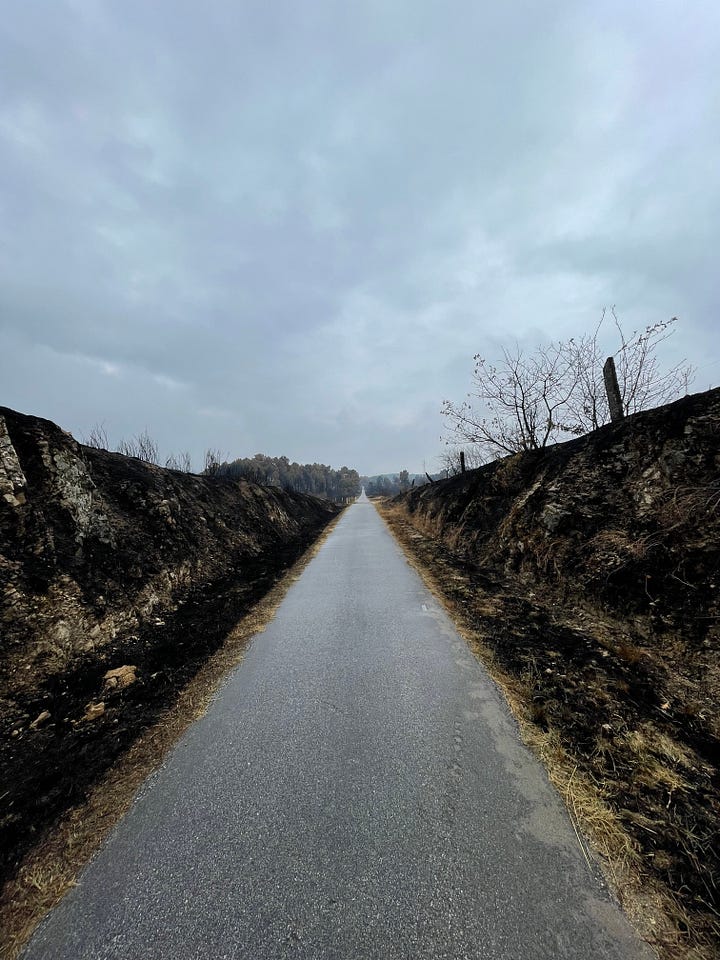
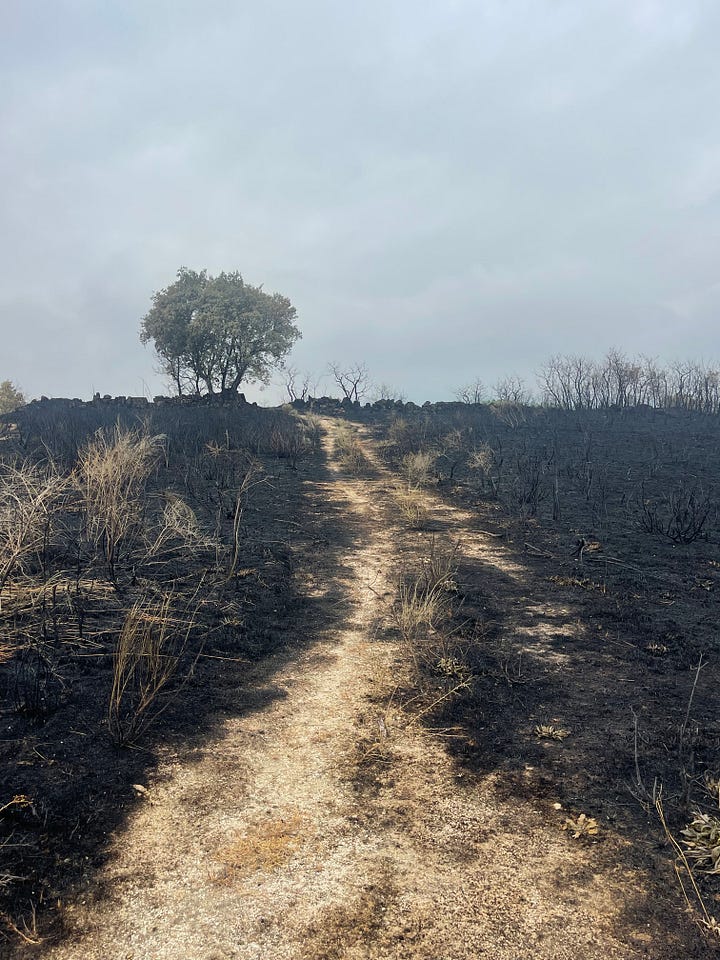
When I ventured out on my walk in the rain, the landscape had changed completely. The once-lush mountains were blackened, the verdant trees, hedgerows, vineyards and bushes reduced to ash and charred stumps. I found the apricot tree I had foraged from only days earlier, now scorched and barren. It was a heavy sight, and I couldn’t help but feel a deep sense of loss for the land that had been so full of life just days earlier. Yet, as I walked further, I stumbled upon a few unexpected things—a yellow butterfly danced around a patch of violet flowers that had somehow survived and a bit further down the road, a colony of bees still buzzed around their charred hives, alive and active despite the destruction all around them. It was a glimmer of hope, a reminder that life persists, even in the face of such loss.
Later that day, I stopped by the fountain near my house, filling my bottle with the restorative, mineral-rich water of Pedras Salgadas. The campfire aroma still lingered in the air, but the rain had washed away much of the smoke, and patches of blue sky were beginning to break through the clouds. Back inside, I spread the fig chutney I had made on a slice of crusty bread, the sweet and spicy flavors reminding me of this region's abundance, even in these difficult times.

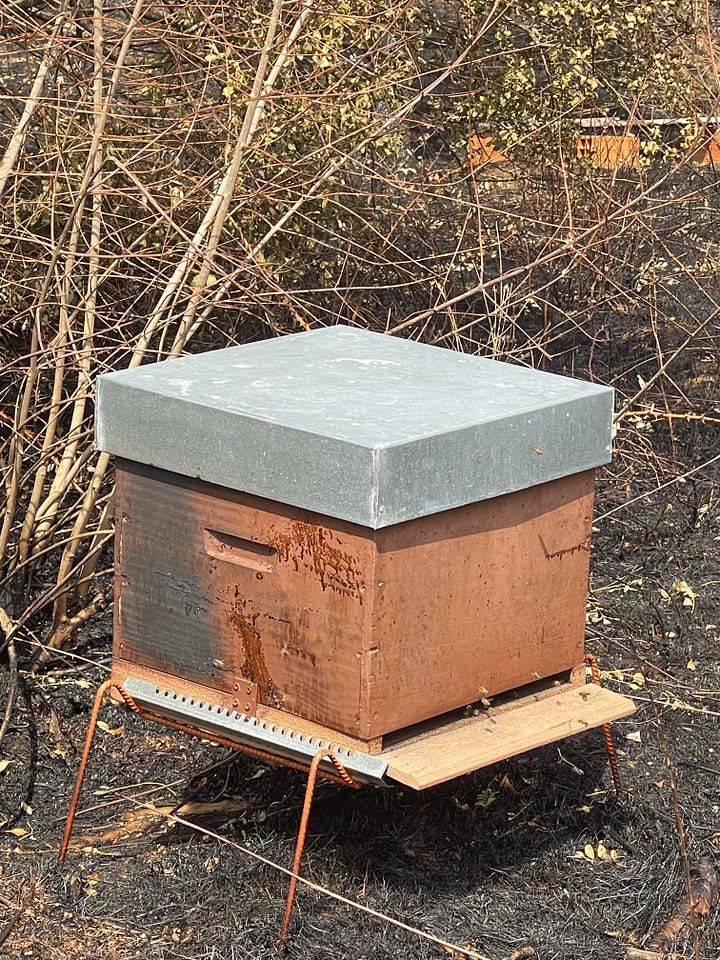
There was something comforting in the solidarity I saw during the fires—the way neighbors, firefighters, and even planes from the EU came together to battle the flames. Despite the destruction, I felt a stronger connection to this country, its people, their sense of community and their resilience. As I bit into a whole fig, luscious and ripe, it tasted the same as it had the week before, but I felt different. The fires had scarred Portugal, but they had also deepened my bond with this country I now call home.
Recipes From the Fire
As the wildfires raged through the mountains ringing the valley, the world outside felt chaotic and uncertain. In the midst of the smoke and glowing red skies, I found comfort in the familiar rhythms of the kitchen. With figs I had foraged before the fires began, and ingredients from the farm, I turned to cooking as a way to ground myself. These recipes—each born from a moment of reflection during the fire—are not just meals; they are symbols of comfort, and hope, reminding me that even in times of destruction, the kitchen can be a place of solace.
The simple act of cooking something for yourself is grounding, a way to feel like you're taking care of your body and soul.
– Nigel Slater
My newsletter is reader-supported.
Free subscribers get limited access to the weekly newsletter and two weeks worth of archives.
Paid subscribers get complete access to all of the content in my newsletters and my entire archives. You’ll also get all of the recipes, guides, interviews, cooking tips, essays and more, plus the ability to comment and participate in discussions.
Newsletters will arrive right in your Inbox or you can read them through the app.
Fig and Apricot Energy Balls
A recipe to keep you going.
With the figs I had foraged just before the flames started to spread, I made these flavorful, nutritionally-dense energy balls. They’re perfect for grabbing when you need a quick snack, full of natural sweetness, fiber, and healthy fats. They also travel well, making them ideal for foraging walks or as a nourishing treat to sustain you through difficult days. They’re a lovely balance of sweet and spiced, with a hint of the warmth I craved while watching the red glow of the fire on the horizon. As the birds flew in strange patterns and the landscape changed before my eyes, this little recipe grounded me, offering nourishment when the world outside felt so unsteady.
Prep Time: 20 minutes
Servings: 12-15 energy balls
Ingredients:
6 dried apricots
8 medjool dates, pitted
1 cup fresh figs, halved
1 tbsp ginger, grated
1 small orange, zest and juice
2 tbsp peanut butter (or almond butter)
1 cup rolled oats
1/4 cup sliced almonds
1 tablespoon honey
2 tbsp mixed seeds (sunflower, pumpkin, sesame)
Pinch of sea salt
Start by placing the dried apricots, dates, and fresh figs into a food processor. Pulse until you get a sticky mixture, where the dried fruit is well broken down but still textured. Grate the ginger and zest the orange directly into the food processor. Add the juice of the orange, along with the peanut butter. Blend again until everything is well combined.
In a large bowl, combine the oats, sliced almonds, honey, mixed seeds, and a pinch of sea salt. Pour the blended fruit mixture over the dry ingredients and mix until fully combined. The dough should be sticky and hold together easily.
Using your hands, roll the mixture into small balls, about the size of a walnut. Place them on a plate and refrigerate for 15-20 minutes to firm up. Once chilled, serve or store the energy balls in an airtight container in the fridge for up to a week.
Fig and Date Chutney
This chutney pairs beautifully with cheese, roasted meats, or spread on crusty bread. It’s a versatile condiment that brings the sweetness of figs and dates together with warming spices—a perfect accompaniment to cozy meals as the air cools and the fires become a distant memory.
Prep Time: 15 minutes
Cook Time: 1 hour
Servings: 2 jars
Ingredients:
1 large onion, diced
2 cloves garlic, minced
1 tbsp fresh ginger, grated
Zest of 1 small orange
Juice of 1 small orange
12 fresh figs, quartered
8 medjool dates, pitted and chopped
1/4 cup balsamic vinegar
1/4 cup apple cider vinegar
1 tbsp honey (or maple syrup for a vegan option)
1 tbsp mustard seeds
1/4 tsp ground cinnamon
1/4 tsp ground black pepper
1/4 tsp chili powder
Pinch of sea salt
Heat a splash of olive oil in a large, heavy-bottomed pot over medium heat. Add the diced onion and cook until soft and translucent, about 5-7 minutes. Add the minced garlic and grated ginger, stirring for another minute until fragrant.
Stir in the orange zest and juice, then add the quartered figs and chopped dates. Let the mixture simmer gently, allowing the fruit to release its juices. Pour in the balsamic and apple cider vinegars, along with the honey, mustard seeds, ground cinnamon, black pepper, chili powder, and a pinch of sea salt. Stir everything to combine. Reduce the heat to low and simmer uncovered for about 45-60 minutes, stirring occasionally. The chutney should thicken as the figs and dates break down and the flavors meld together.
Once the chutney has reached a rich, thick consistency, remove it from the heat. Allow it to cool slightly before transferring it into sterilized jars. Seal the jars and store in the fridge for up to a month.
Wheat Pasta with Charred Endive, Burrata, Figs, and Salsa Verde
This pasta dish was born from the ingredients I had on hand—the fresh figs picked before the flames, and the burrata whose creamy interior felt like the perfect counterbalance to the chaos outside. A twist on the traditional Italian salsa verde, this version incorporates the whey from the burrata, adding a tangy richness that pairs beautifully with the bitterness of charred endive and the sweetness of figs. It’s a comforting yet elevated meal, perfect for grounding you when the world outside feels overwhelming.
Prep Time: 35 minutes
Serves: 4
Ingredients:
16 oz whole wheat pasta
1 large endive, halved lengthwise
1 ball of burrata
6 fresh figs, quartered
1/4 cup walnuts, roughly chopped
Olive oil for cooking
Salt and pepper to taste
For the Salsa Verde:
1/4 cup fresh Italian parsley, finely chopped
1 clove garlic, minced
1 tbsp capers, chopped
Zest of 1 lemon
1 tbsp lemon juice
2 tbsp extra virgin olive oil
2 tbsp whey from burrata
Salt and pepper to taste
Cook the Pasta: Bring a large pot of salted water to a boil. Add the whole wheat pasta and cook according to package instructions until al dente. Drain, reserving a small cup of the pasta water, and set aside.
Char the Endive: While the pasta cooks, heat a grill pan or skillet over medium-high heat. Lightly brush the cut sides of the endive with olive oil and season with salt and pepper. Place the endive cut-side down on the hot pan and cook until it is nicely charred, about 3-4 minutes. Set aside.
Prepare the Salsa Verde: In a small bowl, combine the parsley, garlic, capers, lemon zest, lemon juice, and olive oil. Stir well. Add 3 tablespoons of the whey from the burrata container and mix until the sauce comes together. Season with salt and pepper to taste. If the sauce is too thick, add a bit of the reserved pasta water to thin it out.
Assemble the Dish: In a large bowl, toss the cooked pasta with half of the salsa verde. Divide the pasta onto plates, and top with the charred endive and quartered figs. Place the burrata in the center of the plate, and drizzle with the remaining salsa verde.
Garnish and Serve: Sprinkle the chopped walnuts over the top for added crunch. Season with freshly cracked black pepper and a drizzle of olive oil if desired. Gently slice into the burrata, allowing the creamy interior to spill over the pasta. Serve immediately.
Expat Life: Advice, Tips, News and Encouragement
I relocated from America to Europe about four years ago and I’m always being asked what the experience has been like, how to do it, advice for making the process easier, and where to live.
It’s tricky, sometimes headache inducing, often nerve wracking, a bit baffling, but not impossible and at least for me, fulfilling, rewarding, and life enhancing. This weekly section explores what I’ve learned (and am continuing to learn) and highlights the most recent news and helpful advice for those who are thinking about exploring the expat life.
In this week’s edition of Expat Life: Japan’s New Digital Nomad Visa!
Japan is in the process of launching its digital nomad visa, opening up new possibilities for remote workers eager to experience the country's unique blend of tradition and modernity. This visa will allow professionals to live and work in Japan while staying employed by companies based abroad.
Known for its cutting-edge technology, breathtaking landscapes, and rich cultural heritage, Japan offers digital nomads an unparalleled opportunity to immerse themselves in its dynamic cities or serene rural areas. With its reliable infrastructure, excellent public transportation, and renowned healthcare system, Japan’s new visa is perfect for those looking to combine a high-quality work environment with a truly enriching lifestyle. This initiative reflects Japan’s efforts to attract global talent and boost its status as a top destination for remote workers.
Let’s Talk!
Please join the What’s Good Here community by posting a comment or to just say hello to get the conversation started! (for paid subscribers only)
Image attributions throughout the newsletter are mine, unless otherwise noted.
If you would like to learn more about me and discover what I will deliver to you each week through this newsletter, you can find that information here or check out my Instagram or website.




